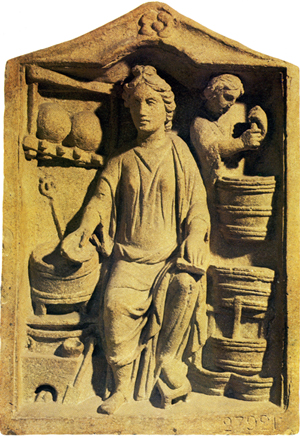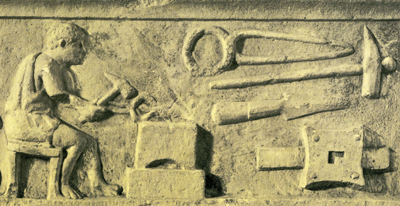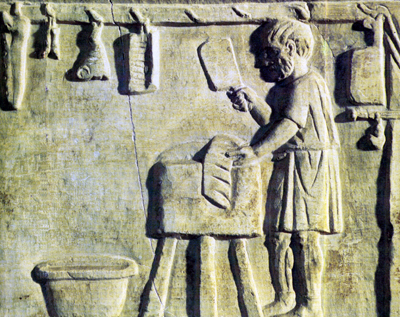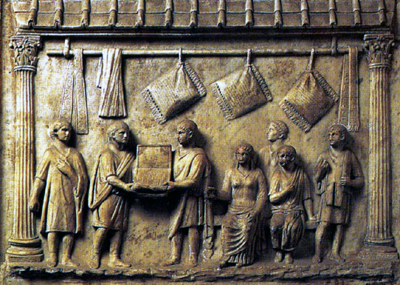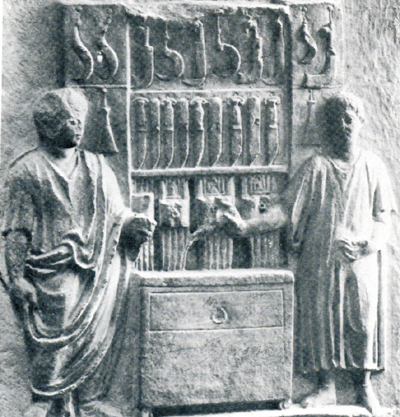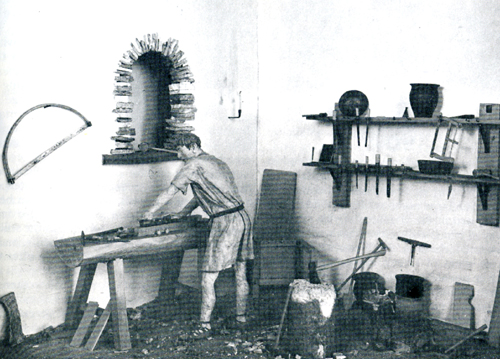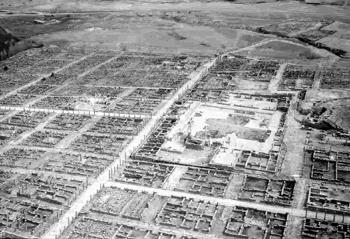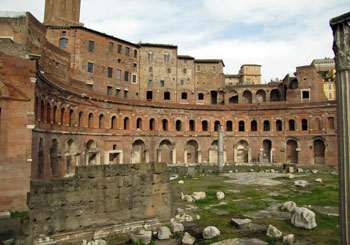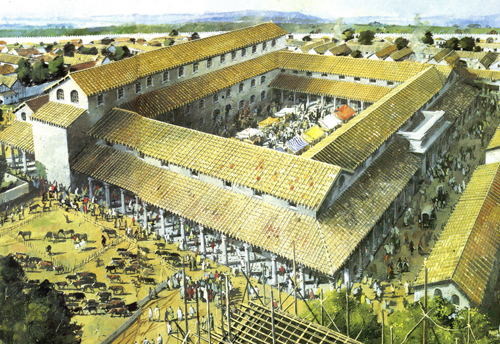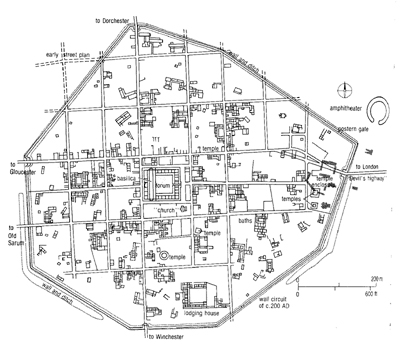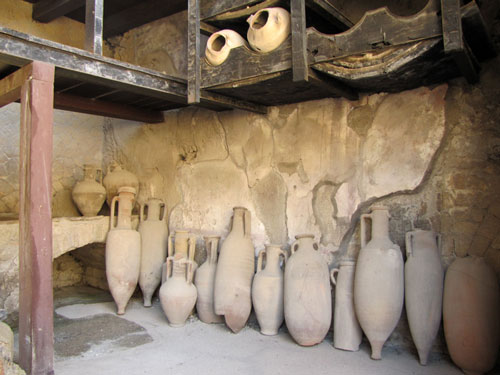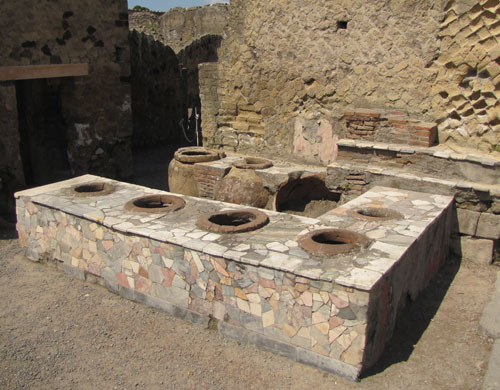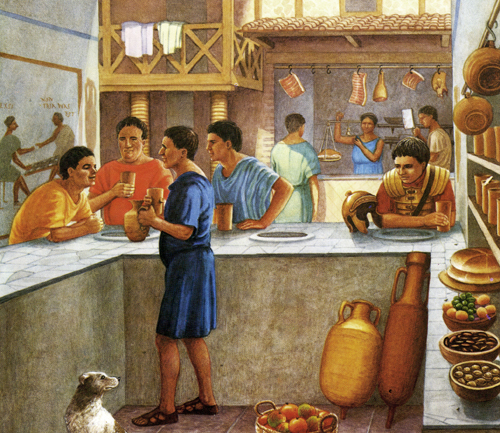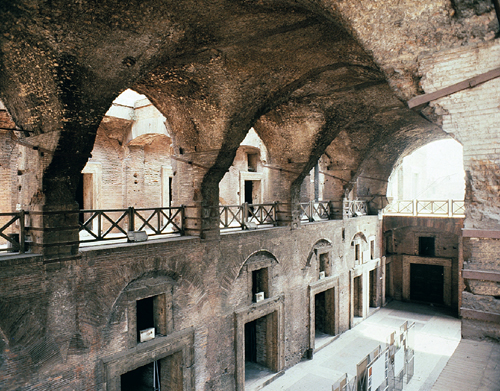|
Roman Shops and Forums
The Celts had workmen and traders whom you could visit and buy various products. But the Romans took this one step further by building rows of shops along streets selling a bigger range of products than you could easily get in a Celtic town. Also, at the centre of each town was a special area, usually square and surrounded by buildings, where there were more shops and where on market days traders and farmers could bring their goods to sell on stalls. This was real urban living and must have been an amazing sight to a Celt.
Imagine walking along a crowded street in a town like London or St. Albans, under the covered walkways, where you could browse and buy items like pottery and glassware, jewellery, iron or bronze tools or weapons, perfumes and oils, household items, clothes, shoes, medicines, wine, and of course all sorts of foods. You could buy a drink or a snack at a tavern, or even borrow money from a banker. Crowding the streets too would be Carts and pack animals laden with goods.
Shopkeepers usually lived behind or above their shop. Shops were often built into the front of larger houses and the shop space was rented from the house owner.
The forum was not only a market place, it was the public centre of the town. Next to it was usually the town hall, and it might have a statue of the emperor. There might be a separate market place for different purposes, such as selling cattle or sheep.
On this page are some photos of real shopping streets, reconstructions of what shops might have looked like, and stone carvings showing various types of shops.
A pharmacist (making and selling medicines)
A smith and his tools
A butcher
A greengrocer selling vegetables
A cloth seller
Another cloth seller
A cutler (seller of knives and other metal tools)
Reconstruction of a carpenter's workshop in Silchester
Timgad, Algeria - showing the forum in the centre of the town.
The markets of Trajan |
Reconstruction of the forum at Silchester |
|
Map of Silchester - the forum is in the centre
|
|
|
The forum at Verulamium, now St. Albans, North of London
|
|
|
The main street in Herculaneum. Often rich people rented out rooms at the front of their houses as shops.
A wine shop in Herculaneum - the jars were stored on the racks above
A thermopolium in Herculaneum. This was a restaurant/takeaway. Both hot and cold food and drink were stored in the jars in the counter. Most Romans did not eat lunch at home and visited a thermopolium instead.
|
|
|
A thermopolium (tavern) with a butcher's shop in the background
|
|
|
The covered market of Trajan in Rome
The markets of Trajan in Rome - each square doorway is a shop. |
